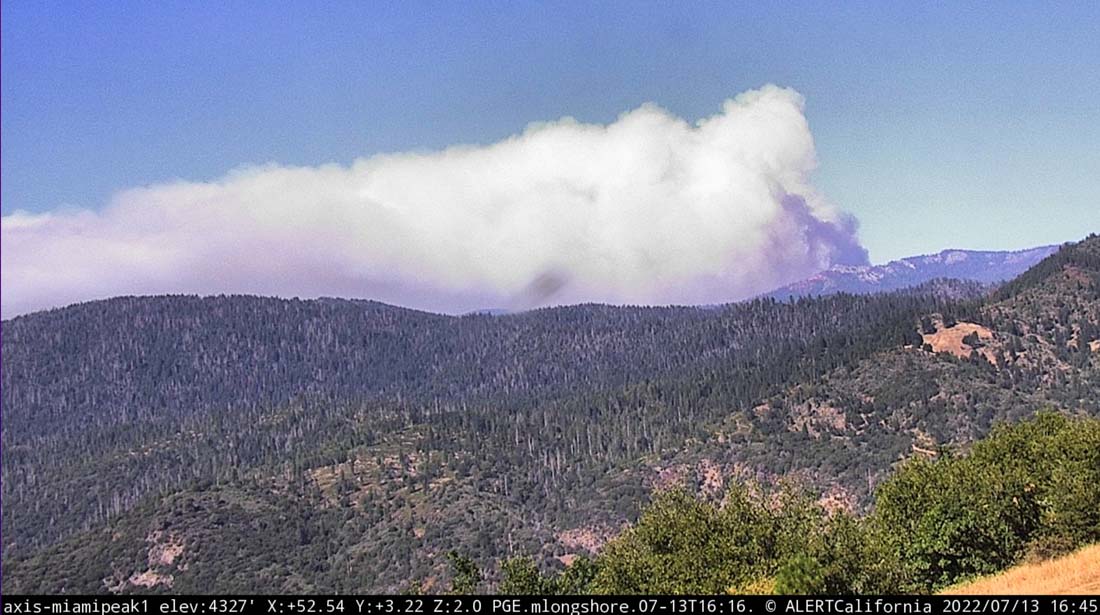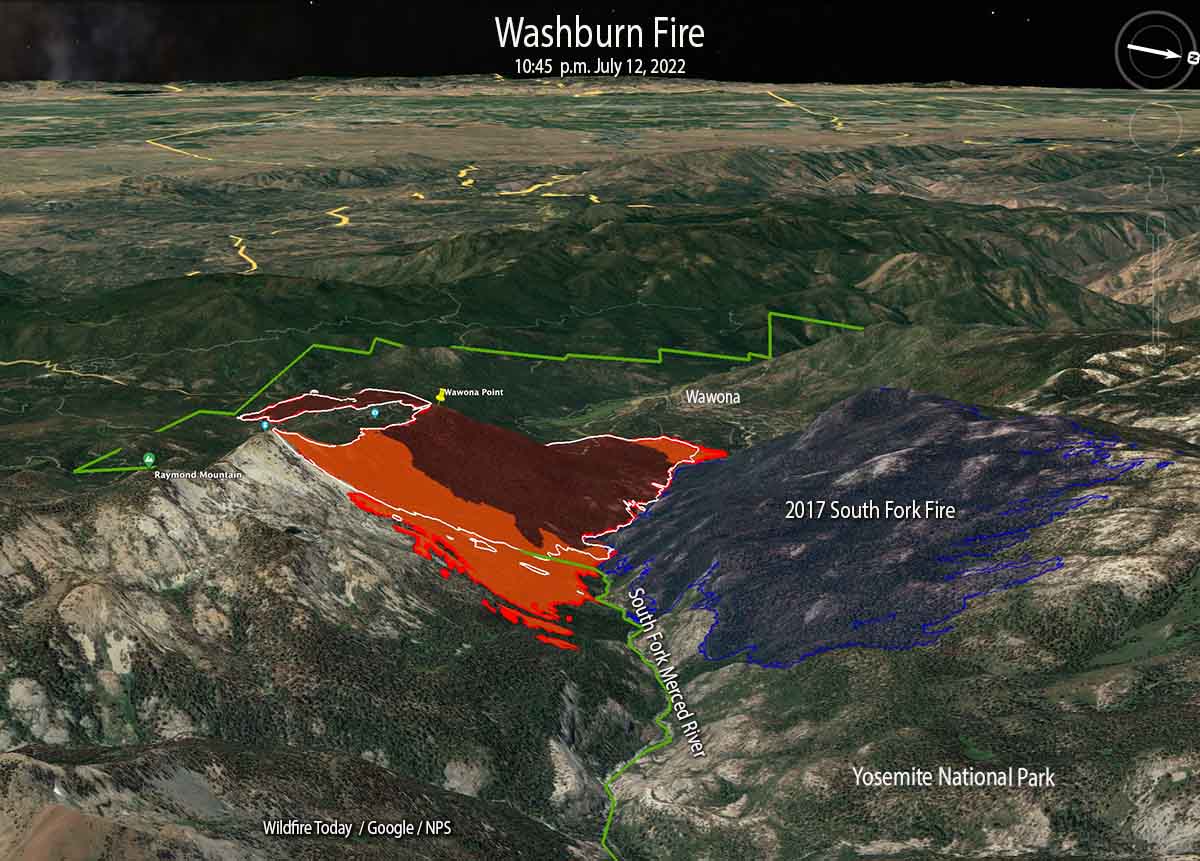The Washburn fire in Yosemite National Park has kicked up Wednesday afternoon like it has every afternoon since it started July 7.
Today, on the eastern portion of the blaze, firefighters on the ground have received support from helicopters. Later in the day, in response to spot fires and heightened fire behavior, they requested the assistance of two sizable and one extremely large aerial tanker to impede the progression.
A community gathering regarding the fire will be broadcasted in real-time on Facebook at 7 p.M PDT on July 14th.
The FIRIS plane captured footage of the blaze earlier today.
OES Intel 12, July 13th on the #WashburnFire Yosemite National Park. Fire is mapped at 3,949 acres at 11:09 hours. pic.twitter.com/n79QnMzOj7
— FIRIS (@FIRIS) July 13, 2022
Revised at 6:04 a.M. PDT on July 13, 2022.

The extent of the 2017 South Fork Fire has sparked the five-year-old plants and traversed the South Fork of the Merced River, extinguishing all of the small fires on the northern side. The fire behavior on the Washburn Fire has been concentrated on the eastern side, where it has spread beyond Yosemite National Park and entered the Sierra National Forest in the past day. Up until now, the teams have managed to accomplish this.

In order to halt the progress beyond that specific location, the team responsible for incident management is assessing the possibility of constructing a firebreak on the eastern side, stretching from Raymond Mountain to the river.
An analyst interpreted the data found and mapped the 3,772 acres burned by a fire using an infrared line-scanning aircraft on a flight at 10:45 p.M.
Their infrared footage, captured while facing east, is presented below. On July 12th, at 10:06 p.M., Another airplane utilizing an alternate technology known as FIRIS, stated that the area covered by the fire was approximately 3,843 acres.
OES Intel 12 on the #WashburnFire Yosemite National Park. Fire is mapped at 3,843 acres at 22:06 hours. pic.twitter.com/zSKsUd6rGD
— FIRIS (@FIRIS) July 13, 2022

At 12:53 p.M. On Tuesday, the mapping of the Washburn Fire in Yosemite National Park revealed that 3,516 acres have been covered. Currently, the fire crews are making significant headway, particularly on the south and west sides, which are gradually becoming more secure.
The National Park Service announced on Tuesday that over 500 fully grown giant sequoias are located near flammable materials and have managed to remain largely unharmed by the fire. A portion of the fire, covering around 340 acres, is currently affecting the Mariposa grove of giant sequoias, some of which have been around for nearly 3,000 years.
They now have a fire line around the Wawona community and a defense structure in place. On Monday, firefighters suppressed about 15 spot fires on the west side of the fire that were across Highway 41.

The community is located on the northeast side of the highway, extending down to the South Fork of the Merced River. In most places around the community, fire crews are actively extinguishing fires that occur across the river. These fire-fighting efforts are particularly focused on the scar left by the 2017 South Fork Fire.
The hotshot crews are currently assessing the feasibility of building a fireline between the river and Mountain Raymond, in order to halt the movement of the fire. They are being assisted by air tankers as they construct a fire line along the east ridge of Point Wawona, which is approximately a mile away from the point where the fire is currently being held. The fire continues to spread on the eastern side.
Cicely Muldoon, the superintendent of Yosemite, stated that the fire was the result of human activity.
Muldoon stated on Monday evening, “We are thoroughly examining that. That is the extent of what I can disclose at this moment. It is currently being investigated. As everyone is aware, there was no occurrence of lightning on that particular day, therefore it is an ignition caused by human activity.”
The relative humidity will be in the range of 20-30 percent, and temperatures will reach the low-90s. Winds should mostly remain moderate to light, driven by the terrain. The weather for this week will continue to be dry and warm due to the strengthening of a high-pressure system.